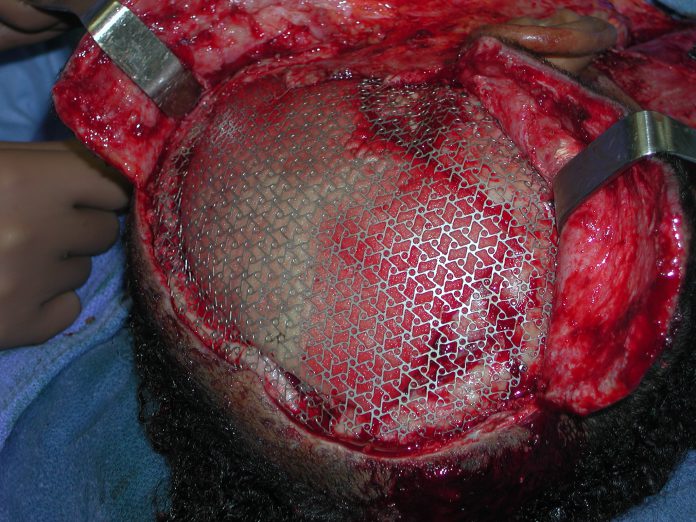The procedure of using titanium plates for a patient’s cranium is known as cranioplasty. The procedure involves surgically repairing a defect in the skull which is either left behind because of a previous injury or operation. Cranioplasties can be divided into three different types, most of the surgeries involve restoring the original skull piece and contour of the skull with a customized contoured graft made out of materials, for example titanium, either plate or mesh, acrylic molded or prefabricated at the time of surgery or a synthetic substitute of bone. The procedure is generally performed after traumatic injuries. If children are under 3 years of age, congenital anomalies or growing skull fractures are a common cause. However, cosmetic issue is not the only aim of cranioplasty, it is also used for increasing social performance and relieving psychological drawbacks. Cranioplasty is also known for improving the incidence of epilepsy. On the contrary, the contraindications of cranioplasty include brain swelling, infection and hydrocephalus.
Cranioplasty is a surgical procedure for repairing defects in the skull which are either left behind because of a previous injury or surgery. There are several different kinds of cranioplasties, however, most procedures involve restoring the contour of the skull and lifting the scalp with either a customized contoured graft or original skull piece. The conventional methods of cranioplasty involve methods of peeling back the five layers of the scalp and placing a custom implant or remnant bone in the proper cranial location. A newer technique involves the surgeon inserting a bone implant by pulling the uppermost layers between the third and fourth layers of the scalp. Cranioplasty is performed for reasons including protection, in cases where cranial defect can leave the brain vulnerable to damage in certain places; function, for the improvement of neurological function in some patients; for aesthetics, in case a noticeable skull defect affects the appearance and confidence of the patient and headaches which are caused either because of previous injury or surgery.
The doctor needs to be informed before-hand if the patient has any health problems, including conditions of blood clotting, if the patient is taking aspirin, warfarin or any other blood thinners or anti-inflammatory drugs or if there are any medications or substances the patient is allergic too. The procedure is carried out in the operating room. Once under anesthesia, the team of surgeons positions you to gain optimal access to the bone defect. The area of incision is shaved and prepared with antiseptic, the patient is covered with drapes, leaving only the surgical area exposed. In addition, the surgeon carefully cuts the skin of the scalp and separates the layers gently, protecting the dura which covers the brain. The edges of the surrounding bone are cleaned by the surgical team and the surface is prepared for bone implant that that be positioned in the defect properly. Furthermore, the implant is secured to the bones of the cranium with the help of both plates and screws.
References
- Andrabi, S. M., Sarmast, A. H., Kirmani, A. R., & Bhat, A. R. (2017). Cranioplasty: Indications, procedures, and outcome–An institutional experience. Surgical neurology international, 8.




